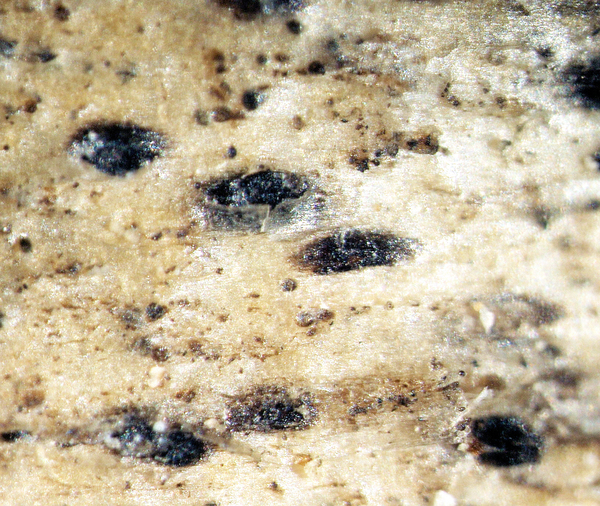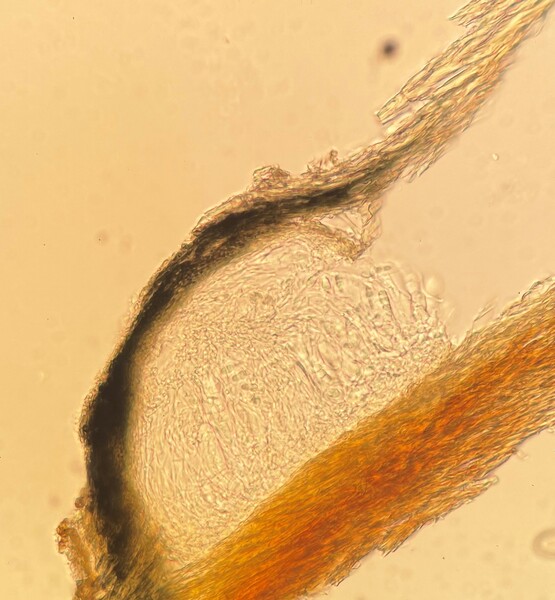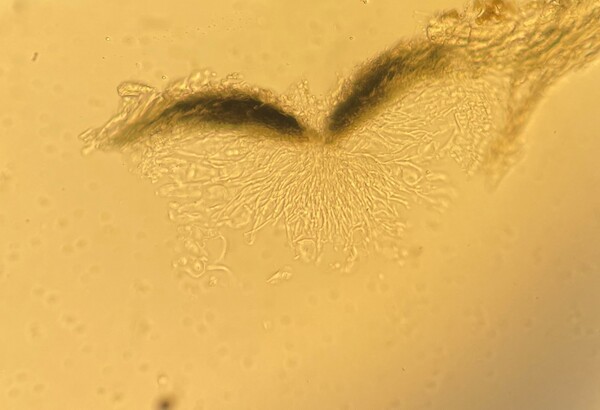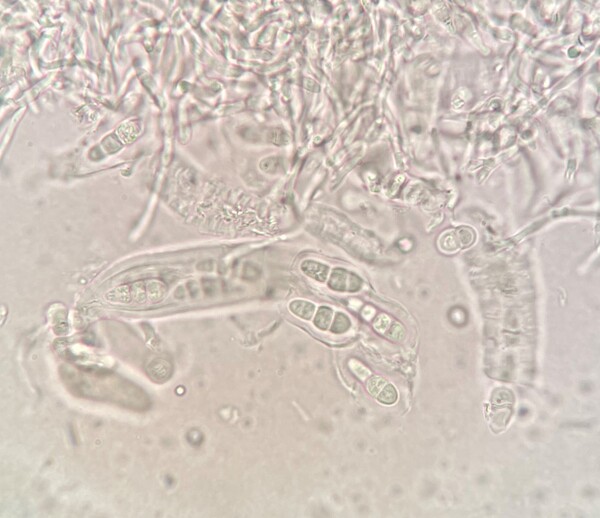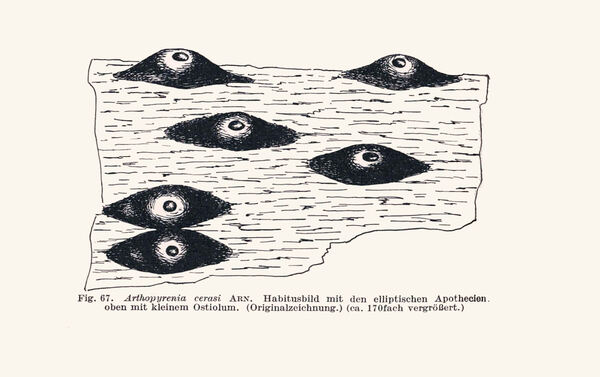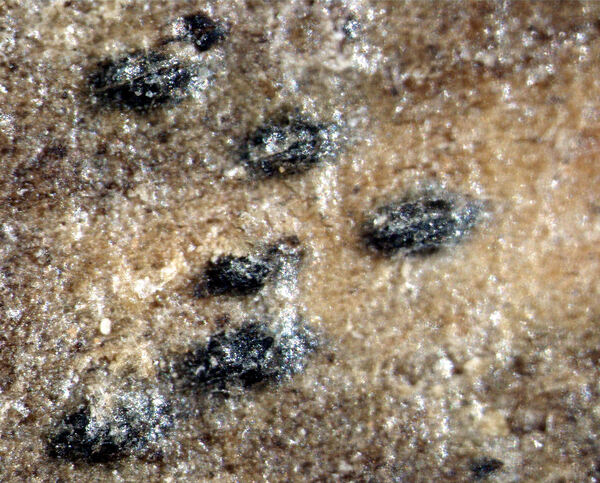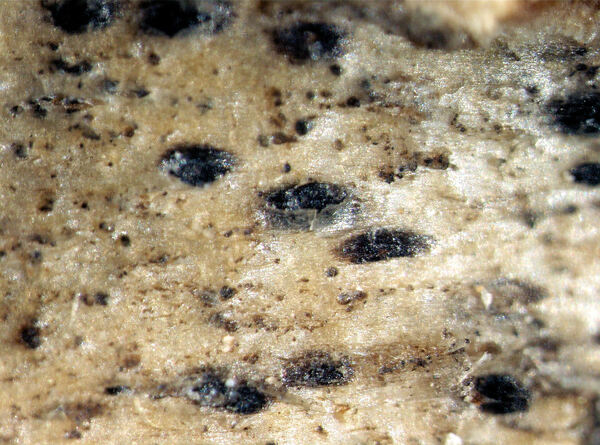Arthopyrenia cerasi (Schrad.) A. Massal.
Ric. Auton. Lich. Crost.: 167, 1852. Basionym: Verrucaria cerasi Schrad. - Ann. Bot. (Usteri), 22: 87, 1797.
Synonyms: Arthopyrenia crombei A.L. Sm.; Metasphaeria cerasi (Schrad.) Vain.; Pseudosagedia cerasi (Schrad.) M. Choisy; Pyrenula cerasi (Schrad.) Trevis.; Spermatodium cerasi (Schrad.) Trevis.; Verrucaria epidermidis var. cerasi (Schrad.) Ach.
Distribution: N - VG, Frl (TSB 4157), Ven, TAA (Nascimbene & al. 2007b), Lomb, Piem (Isocrono & al. 2004, 2005b), VA (Ongaro & al. 2022), Emil (Nimis & al. 1996, Fariselli & al. 2020), Lig (Giordani & Incerti 2008). C - Marc (Frati & Brunialti 2006), Laz (Ravera & al. 2016b), Abr (Nimis & Tretiach 1999, Corona & al. 2016), Sar (Rizzi & al. 2011, Di Nuzzo & al. 2022). S - Camp (Aprile & al. 2003b), Pugl, Cal (Puntillo 1996), Si (Nimis & al. 1994, Grillo 1998, Grillo & Caniglia 2004).
Description: Thallus crustose, mostly endosubstratic, inapparent or appearing as a paler patch on the bark, non-lichenized. Perithecia black, usually ellipsoid in outline, 0.3-0.5 x 0.2-0.4 mm, the ostiole distinct, centrally located. Involucrellum dimidiate, dark brown in water, K+ greenish, of compacted hyphae and bark cells; exciple thin, colourless to pale brown, surrounding the centrum; pseudoparaphyses persistent, slender, simple or sparingly branched, 1.5-2 μm thick, the cells c. 8-14 μm long; downwardly projecting periphysoids present near the ostiole. Asci 8-spored, cylindrical-clavate, fissitunicate, with two functional wall layers, 60-75 x 14-18 μm, with biseriately arranged spores. Ascospores 3-septate, more or less constricted at septa, especially the median one, hyaline, clavate or obovoid with rounded apices, (15-)17-22(-23) x 5-7 μm, surrounded by a c. 2 μm thick (in K), distinct perispore. Pycnidia black, 80-120 μm across, with either macro- or microconidia; macroconidia 3-septate, hyaline, oblong, 11-13 x 2-3 μm; microconidia filiform, 9-14 x c. 0.8 μm. Photobiont absent. Spot tests: thallus K-, C-, KC-, P-, UV-. Chemistry: without lichen substances.Note: a temperate early coloniser of smooth bark, mostly of Corylus and Prunus, most probably non-lichenised.
Growth form: Fungus
Substrata: bark
Reproductive strategy: mainly sexual
Pioneer species
Commonnes-rarity: (info)
Alpine belt: absent
Subalpine belt: absent
Oromediterranean belt: absent
Montane belt: absent
Submediterranean belt: rather rare
Padanian area: extremely rare
Humid submediterranean belt: rather rare
Humid mediterranean belt: very rare
Dry mediterranean belt: absent

Predictive model
Herbarium samples
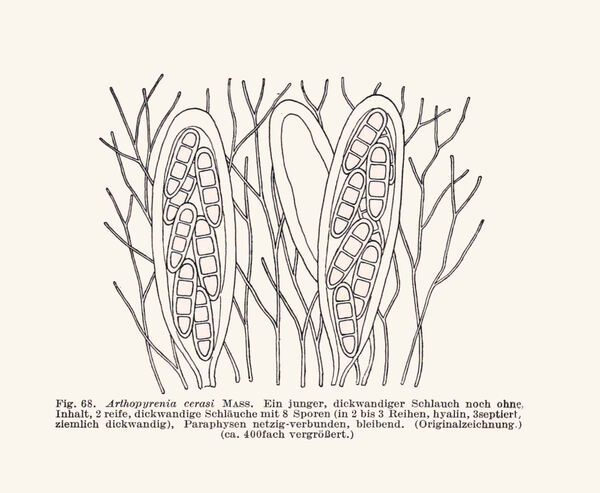
Source: Keissler K. von 1938. Pyrenulaceae, Mycoporaceae, Coniocarpineae. In: Rabenhorst G L: Kryptogamen-Flora von Deutschland, Österreich und der Schweiz. 2nd, IX, Die Flechten, Abt. 1, 2. Gebr. Borntraeger, Leipzig, pp. 1-846.
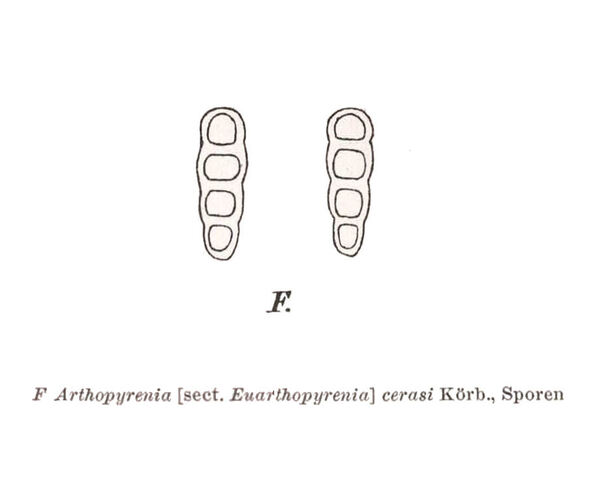
Zahlbruckner A. 1926. Lichenes (Flechten). In: Engler A. (ed.): Die natürlichen Pflanzenfamilien. 2nd ed., vol 8, W. Engelmann, Leipzig, 270 pp.
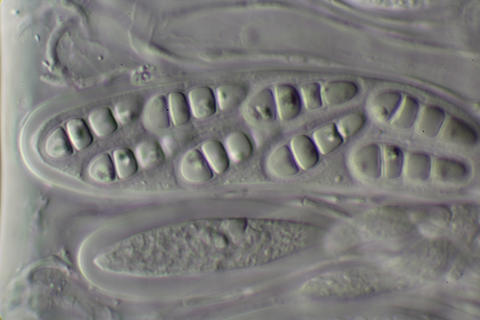
Photo uploaded by P. Cannon - CC BY-SA NC - Source: http://fungi.myspecies.info/all-fungi/arthopyrenia-cerasi
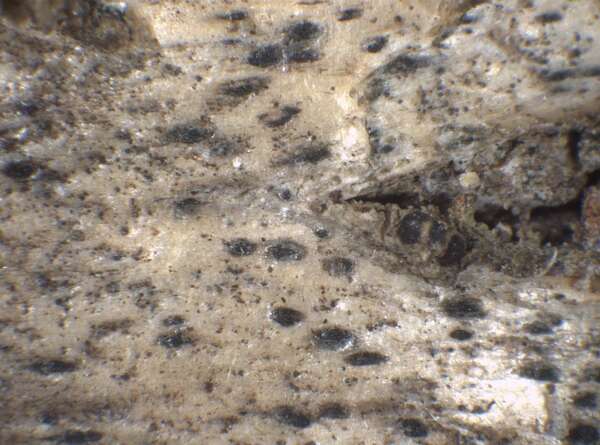

P.L. Nimis; Owner: Department of Life Sciences, University of Trieste
Herbarium: TSB (24759)
2003/03/12
Growth form: Fungus
Substrata: bark
Reproductive strategy: mainly sexual
Pioneer species
Commonnes-rarity: (info)
Alpine belt: absent
Subalpine belt: absent
Oromediterranean belt: absent
Montane belt: absent
Submediterranean belt: rather rare
Padanian area: extremely rare
Humid submediterranean belt: rather rare
Humid mediterranean belt: very rare
Dry mediterranean belt: absent

Predictive model
| Herbarium samples |

Source: Keissler K. von 1938. Pyrenulaceae, Mycoporaceae, Coniocarpineae. In: Rabenhorst G L: Kryptogamen-Flora von Deutschland, Österreich und der Schweiz. 2nd, IX, Die Flechten, Abt. 1, 2. Gebr. Borntraeger, Leipzig, pp. 1-846.

Zahlbruckner A. 1926. Lichenes (Flechten). In: Engler A. (ed.): Die natürlichen Pflanzenfamilien. 2nd ed., vol 8, W. Engelmann, Leipzig, 270 pp.

Photo uploaded by P. Cannon - CC BY-SA NC - Source: http://fungi.myspecies.info/all-fungi/arthopyrenia-cerasi


 Index Fungorum
Index Fungorum
 GBIF
GBIF
